Home » Lab Freeze Dryers Explained
Lab Freeze Dryers Explained
on June 14, 2024 in Blogs
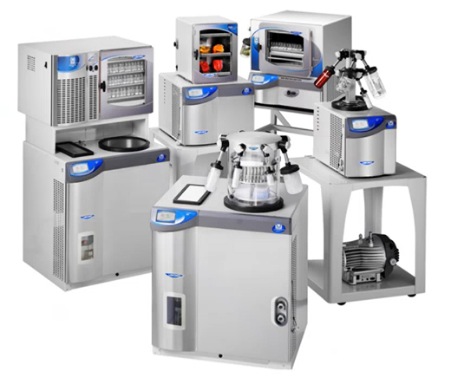
A freeze drier, or lyophilizer, removes moisture from perishable materials while preserving their structure and chemical integrity through a three-phase process: freezing, primary drying (sublimation), and secondary drying (adsorption). In the freezing phase, the material is rapidly frozen to preserve its structure.
During primary drying, ice sublimates under vacuum, removing most of the water. In secondary drying, remaining moisture is removed by slightly increasing temperature. This technology is crucial in pharmaceuticals, biology, food science, and the cannabis industry, where precise temperature control and vacuum conditions ensure product integrity.
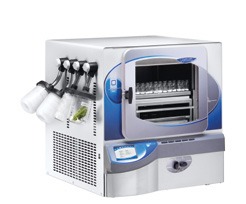
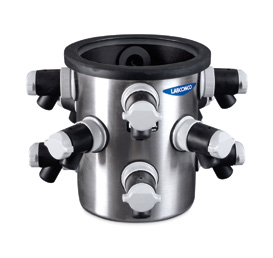
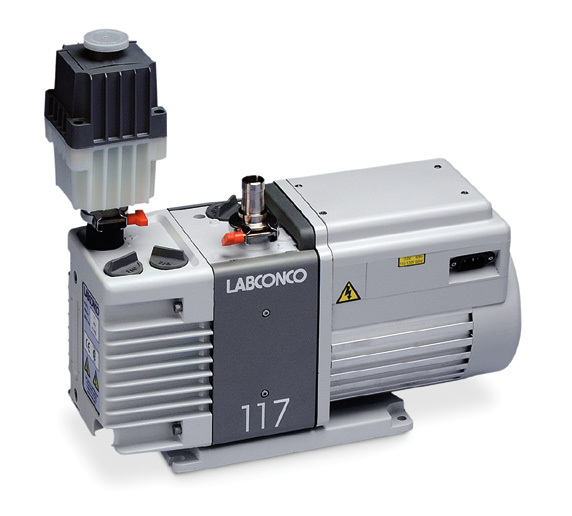
Lab Freeze Dryer Applications
Lab freeze dryers have many different applications depending on your field of study.
In the pharmaceutical industry, they are crucial for preserving medications, making them easier to store and transport.
Biologists utilize freeze drying to preserve samples for later analysis, maintaining the integrity of cellular structures and biochemical compounds.
Food scientists apply this technology to create lightweight, freeze-dried preserved foods with extended shelf lives, ideal for both consumer markets and specialized dietary requirements. Examples of this are strawberries or fruit.
In the cannabis industry, freeze drying is revolutionizing the preservation of cannabinoids and terpenes, significantly enhancing the quality and shelf-life of products.
Freeze drying’s versatility across various fields underscores its importance in advancing research, manufacturing, and preservation methods.
We will note that at-home freeze dryers are mainly for food for preservation, while true lab-grade freeze dryers are used to preserve samples for storage or to change the state of the sample for testing/research
Freeze Dryer Preservation
- In research laboratories, the implications of freeze drying technology are profound, especially when it comes to sample preservation and the extended analysis period it facilitates.
- By removing water while maintaining structural integrity, freeze dryers allow for the long-term storage of biological samples, pharmaceuticals, and chemical compounds without degradation.
- This is pivotal for laboratories undertaking longitudinal studies where sample consistency over time is critical. Additionally, in fields requiring the transport of sensitive materials to different locations for analysis, freeze-dried samples ensure that the integrity of these materials is preserved, eliminating the variable of decomposition during transit.
- Consequently, freeze drying expands the scope of research possibilities, enabling experiments that were previously limited by time-sensitive or geographically bound constraints.
Clearance and Permitting
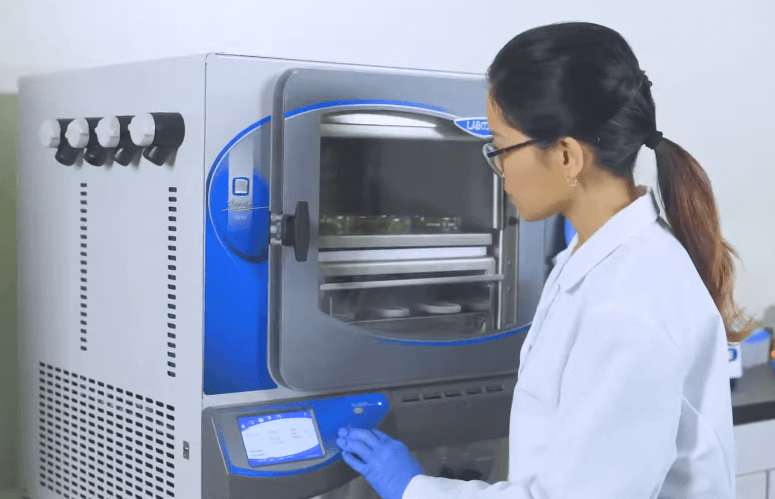
How Much Volume Does a Benchtop Freeze Dryer Hold?
The range of benchtop freeze dryer options, designed to meet various laboratory needs. These compact models are particularly suitable for laboratories with limited space but requiring efficient and reliable lyophilization capabilities.
These units come in different configurations to accommodate varying volume requirements, from small samples to larger batches.
For instance, the FreeZone series by Labconco is available in capacities ranging from 2.5 to 18 liters, allowing researchers to choose a model that best suits their freeze-drying demands.
Each model is equipped with features such as a large touch screen interface for easy monitoring and control, programmable settings for custom drying protocols, and advanced refrigeration technology to ensure efficient and effective freeze-drying.

Why Is a Vacuum Pump Needed with a Freeze Dryer?
A vacuum pump is an essential component of the freeze drying process, serving a critical role in both the primary and secondary drying phases. The primary purpose of the vacuum pump is to reduce the pressure within the freeze dryer chamber to a level where sublimation of ice to vapor can occur without the water passing through the liquid phase.
This low-pressure environment is crucial for the efficient sublimation of frozen water directly into vapor, facilitating the gentle removal of moisture from the sample without compromising its structural integrity or biochemical composition. During the secondary drying phase, the vacuum pump helps in removing the bound water molecules from the product, ensuring the removal of moisture content to levels that inhibit microbial growth and enzymatic reactions.
The effectiveness of the vacuum pump directly impacts the quality of the freeze-dried product, its shelf life, and stability, making it a key factor in the success of the freeze-drying process.
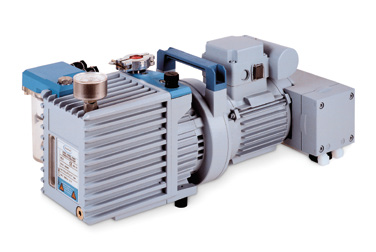
Freeze Drying Methods
Each method has a specific purpose, and the method used depends on the product and the final configuration desired.
Manifold Method
Imagine a laboratory needing to freeze dry multiple small samples of different chemical solutions. Each solution is placed in a separate vial, which is then frozen using one of several methods depending on the product and volume. The frozen vials are quickly attached to the manifold, creating a vacuum.
This setup ensures that each sample has a direct path to the collector, preventing any interference from other samples. As a result, the samples are efficiently dried, preserving their integrity and allowing for individual removal once drying is complete.
Manifold drying has several advantages over batch drying. Each vessel has a direct path to the collector, minimizing competition for molecular space. This is most effective in a cylindrical drying chamber.
In a “tee” manifold, water molecules may encounter congestion when traveling past other vessels. Heat input can be managed by exposing vessels to ambient temperature or using a circulating bath.
This method allows drying of different products simultaneously in variously sized vessels with different closures. Products can be removed individually once drying is complete, making this method flexible and efficient.
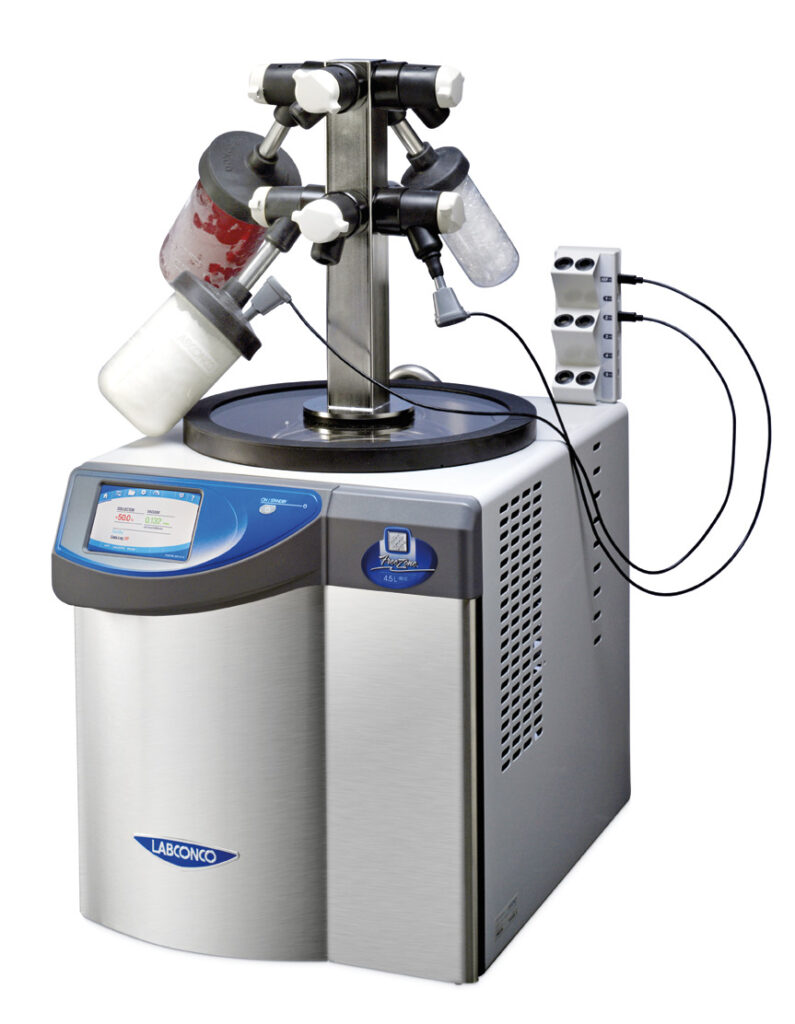
Batch Method
In batch drying, large numbers of similar sized vessels containing like products are placed together in a tray dryer. The product is usually prefrozen on the shelf of the tray dryer. Precise control of the product temperature and the amount of heat applied to the product during drying can be maintained.
Generally all vials in the batch are treated alike during the drying process, although some variation in the system can occur. Slight differences in heat input from the shelf can be experienced in different areas. Vials located in the front portion of the shelf may be radiantly heated through the clear door. These slight variations can result in small differences in residual moisture.
Batch drying allows closure of all vials in a lot at the same time, under the same atmospheric conditions. The vials can be stoppered in a vacuum, or after backfilling with inert gas. Stoppering of all vials at the same time ensures a uniform environment in each vial and uniform product stability during storage. Batch drying is used to prepare large numbers of ampules or vials of one product.
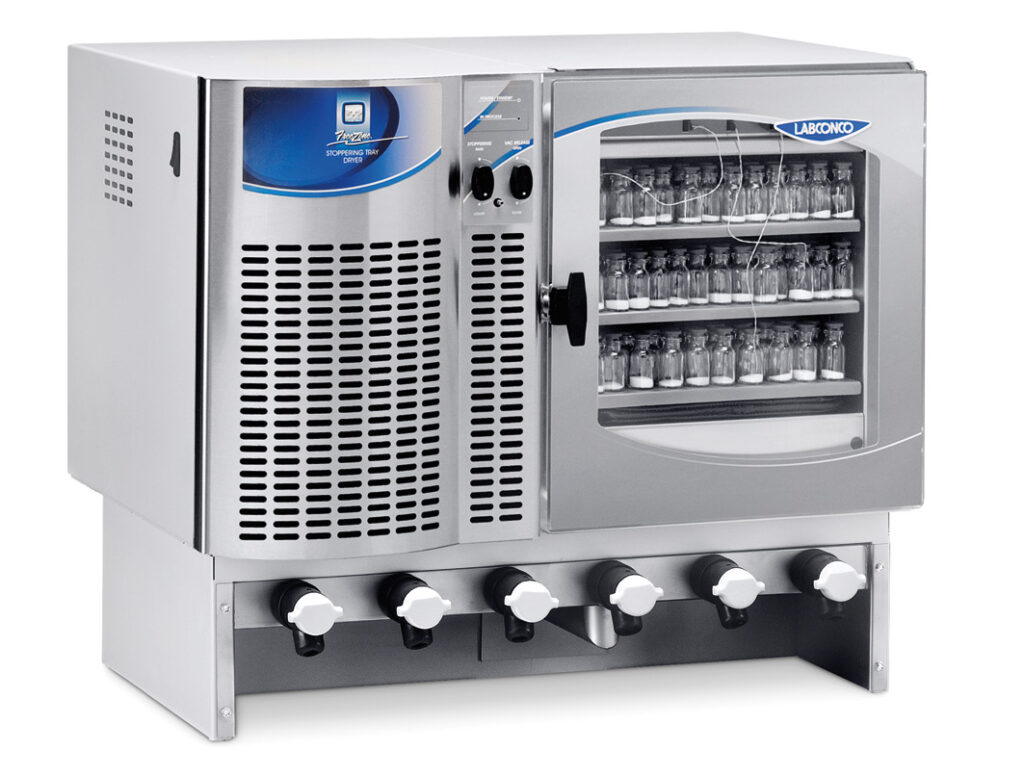
Bulk Method
Bulk drying is generally carried out in a tray dryer like batch drying. However, the product is poured into a bulk pan and dried as a single unit. Although the product is spread throughout the entire surface area of the shelf and may be the same thickness as product dried in vials, the lack of empty spaces within the product mass changes the rate of heat input. The heat input is limited primarily to that provided by contact with the shelf as shown in Figure 7.
Bulk drying does not lend itself to sealing of product under controlled conditions as does manifold or batch drying. Usually the product is removed from the freeze dry system prior to closure, and then packaged in air tight containers. Bulk drying is generally reserved for stable products that are not highly sensitive to oxygen or moisture

Types of Industries for Laboratory Freeze Dryers
Food Research Freeze Dryer
Freeze dryers are crucial in the pharmaceutical industry for extending the shelf life of medications, particularly vaccines, antibiotics, and enzymes. These drugs often denature or lose potency at high temperatures. Freeze drying preserves their structure and effectiveness by removing water content without applying heat.
In the realm of food research and development, freeze dryers play a vital role by enabling the creation of high-quality, dehydrated food products that retain much of their original flavor, nutrition, and texture. This technology is particularly beneficial for developing convenient, ready-to-eat meals and lightweight, nutrient-dense foods for adventurers, military personnel, and space explorers.
Additionally, freeze drying helps in the preservation of seasonal ingredients, allowing them to be used throughout the year and reducing food waste. The precise control over the freeze-drying process ensures that the final product meets the desired quality specifications, making it an indispensable tool in food science laboratories focused on innovation and sustainability.
In the context of long-term food storage, freeze-dried food is revolutionizing how we preserve a variety of food groups, including vegetables, fruits, meats, and chicken. This method not only extends the shelf life of fresh food items, enabling them to be stored for years but also retains the original quality, flavor, and nutritional value.
Whether preparing a large batch for future use or focusing on select food categories, freeze-drying provides an optimal solution for maintaining the integrity of fresh produce and protein sources. The versatility of freeze dryers allows for the efficient processing of different food types in individual or mixed batches, ensuring that everything from vibrant vegetables to delicate meats is preserved at peak freshness.
This technology is particularly beneficial for those looking to researchers and food manufacturers looking to create emergency preparedness rations, long-term storage foods, and healthy snacks.
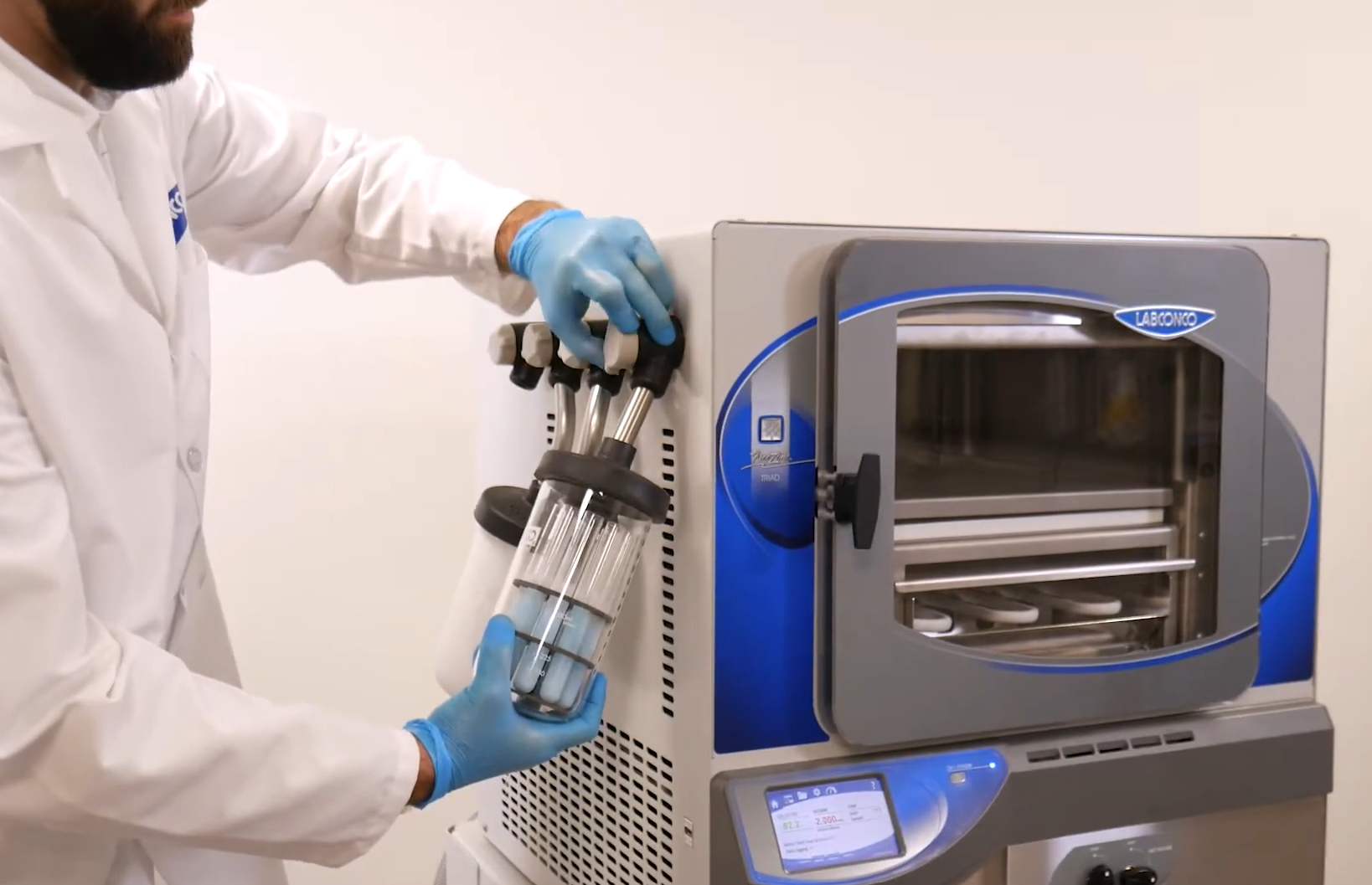
Biotechnology Freeze Dryer
In biotechnology laboratories, freeze dryers are essential for storing biological materials such as cells, tissues, enzymes, and vaccines without altering their structural or chemical composition. This is particularly critical in the development of therapies and treatments using living organisms
Where maintaining the integrity and viability of the biological materials is paramount. Freeze drying, or lyophilization, alleviates the issue of degradation over time by stabilizing these sensitive materials.
Additionally, this method permits easier storage and transportation of biological samples, ensuring they remain viable for future research and application. The freeze-drying process is carefully controlled to avoid any damage to the macromolecular structure of the biological specimens, thus preserving their functional properties.
Freeze dryers in biotechnology are also frequently employed in the production of recombinant proteins and peptides. These molecules, used in various therapeutic and diagnostic applications, require stability and purity, which are achieved through meticulous freeze-drying processes.
By removing the water content under low temperatures and vacuum conditions, researchers ensure that the bioactive compounds retain their efficacy without risk of contamination or denaturation. This is especially crucial for the administration of biologic drugs, where slight alterations in the molecular structure could lead to reduced effectiveness or unwanted immunogenic responses. As advancements in biotechnology continue to evolve, the role of freeze dryers remains indispensable in supporting innovation and ensuring the reliability of biotechnological products.
E. Cut the two plastic front straps that are holding it in the closed position and and raise/lower the sash to make sure it has a smooth operation
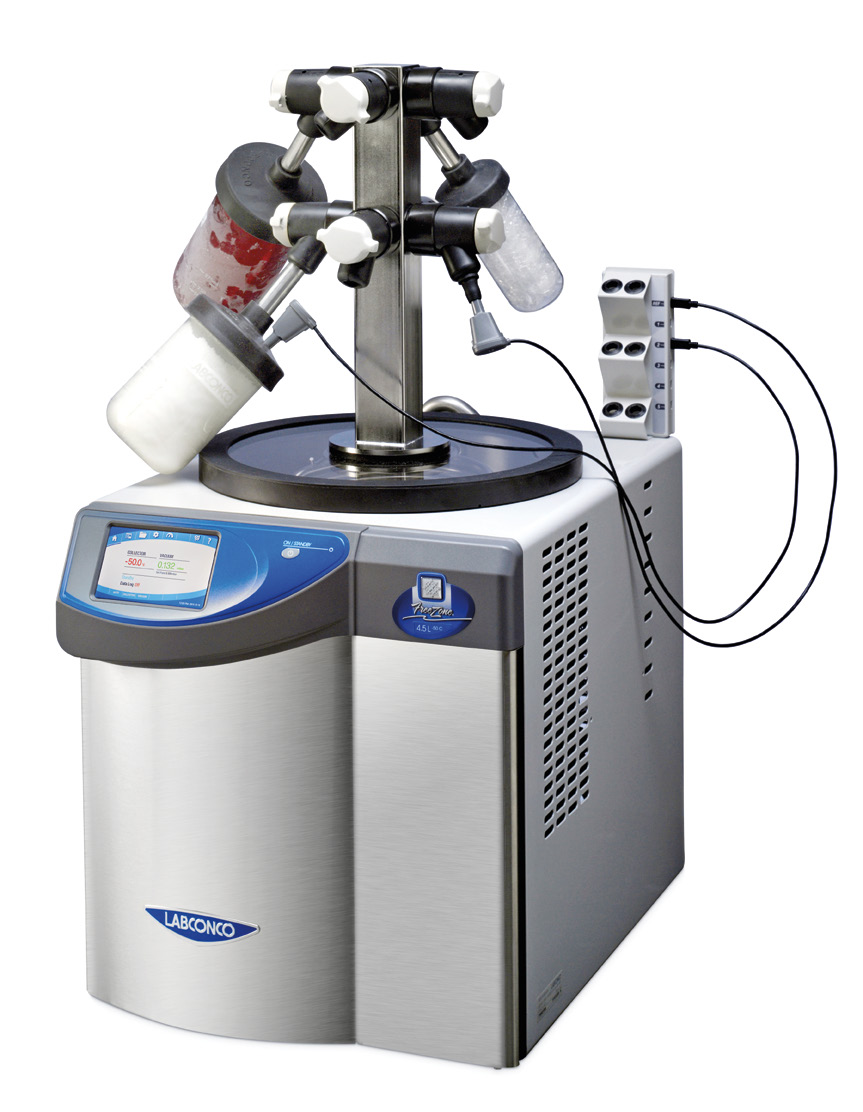
Pharmaceutical Freeze Dryer
In pharmacies, freeze dryers are instrumental in both preparing and packaging a variety of pharmaceutical products, ensuring they deliver the best results when reaching the consumer. The primary benefit of using freeze dryers in this setting is the remarkable preservation of the chemical integrity and efficacy of medications, which might otherwise degrade in the presence of moisture. Pharmacists and pharmaceutical technicians utilize freeze dryers to prepare medications in batches, allowing for efficient handling of prescriptions on a weekly basis.
This is especially crucial for medications that require precise dosages and stability over time, such as antibiotics, vaccines, and biologics. By freeze-drying these substances, pharmacies can package them in a way that extends shelf life, enhances portability, and simplifies dosing—all while maintaining the medication’s effectiveness and safety for the end-user. Freeze drying also facilitates the creation of compounded medications, customized to meet unique patient needs, by ensuring that these bespoke batches retain their intended potency and are protected against environmental factors until they are administered.
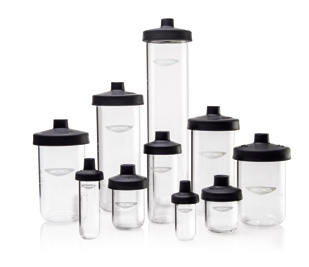
Cannabis Freeze Drying
In addition to the sectors mentioned, the cannabis industry has also embraced freeze drying technology with open arms. By utilizing lab freeze dryers, cannabis producers are able to preserve the potency, aroma, and flavor of their products more effectively than with traditional drying methods.
This process not only ensures a higher quality product for consumers but also aids in maintaining consistency across batches. Further, the reduced moisture content significantly lowers the risk of mold and bacterial growth, which is paramount for both medical and recreational cannabis products. Freeze drying in the cannabis sector is a game-changer, enhancing both product quality and safety.
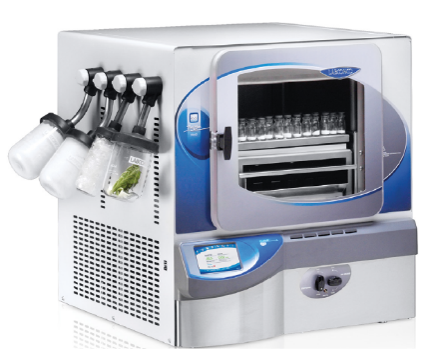
Conclusion
Freeze drying technology has revolutionized diverse industries by offering a host of benefits including extended shelf life, preservation of nutritional value, and maintenance of product quality. In the food industry, prepared, freeze dried meals and snacks retain their original flavor and nutrition, making them ideal for a variety of applications from space travel to emergency preparedness.
Despite the initial cost, the long-term benefits of reduced food waste and extended storage life make this method highly cost-effective. The pharmaceutical field relies on freeze drying to maintain the integrity and efficacy of sensitive medications, while the cannabis industry benefits from higher quality and safer products.
Overall, the advantages of using freeze drying—whether it be for food, medications, or other products—underscore its indispensable role in modern preservation techniques. Freeze dried and properly salted foods, for instance, offer convenience and stability, proving that the method is not just a trend but a necessity in today’s fast-paced world.
Author
-
Dave Young is the founder and President of Specialty Solutions. His passion for laboratory equipment began during my days as a design/mechanical engineer in the industry.
View all posts
Witnessing the incredible work done in labs every day fueled his desire to contribute, and over the past 10+ years, He has built a team that shares his dedication to quality and service. My mission is clear: Supporting Science with Safer Spaces.
